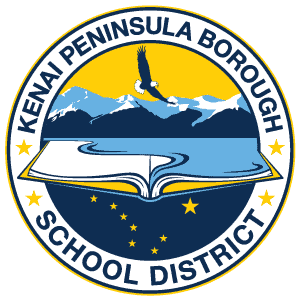December 1999 / School Closures Due to Weather

Ask the Superintendent: School Closures Due to Weather Superintendent's Column Peninsula Clarion D. Peterson December 1999 |
|
QUESTION: How do you make the decision to close schools because of snow? We constantly balance the need to keep students safe with the need to go to school so your question is a good one. Here’s how the system works. Throughout the night the Department of Transportation and the State Troopers are “out and about” doing their jobs. In the early hours of the morning the bus dispatcher checks in with these folks to find out which, if any, roads are too hazardous to run buses. If it is determined that certain roads cannot be run, a call is made to the School District with recommendations. If it is determined that main roads are not passable, schools may either be closed or starting times delayed by two hours. The local radio station will be updated regularly regarding the decision. Our snow chain is pretty elaborate. It would be highly unusual for us to close schools throughout the peninsula (since we cover 26,000 square miles) so we rely on accurate information from the actual communities to make the determination. For example, in the Central Peninsula area, we have designated fourteen people from all over -Nikiski, Cooper Landing, Kenai, Soldotna, Sterling, Tustumena, Beaver Loop, K-Beach, Kasilof, Ninilchik, etc.- to report snow and road conditions. These people provide up to the minute information to the bus dispatcher who in turn provides it to the School District. By policy, only the Superintendent can close a school. This is because there are financial and contractual implications regarding school closures. We have no snow days built into the school calendar. Those of us who have been around long enough know that, depending on the Superintendent, the call can be different. If we call a snow day, the day must be made up. There is no “forgiveness” from the State in meeting the minimum number of school days. The goal is to make the decision about delaying or closing schools as early as possible. To that end, we start with the premise that we’re going to school every day on a regular schedule…. Just because it snows, we don’t cancel school (after all, this is Alaska!). However, when weather and/or road conditions warrant, we can make a two-hour delay in opening of schools. This delay accomplishes several things:
Only when the roads are impossible will the decision be made to actually close the schools. Parents can, as always, make the personal choice that they will keep their child home because of what they consider unsafe conditions. Our bus drivers also have the power to make the immediate decision not to travel a particular road because of unsafe conditions. In other words, let’s say that the driver is about halfway down Funny River Road and the situation is worsening – he or she can make the determination to not finish the route… that’s their call. They advise the bus dispatcher and we update the radio station. These updates occur at fifteen minute intervals on “snow” mornings. The decision to keep schools open, delay their opening, or close them is always a judgment call based on the best knowledge of conditions at the time. We can’t control the weather. It never fails – if we keep schools open, the snow keeps coming down; if we decide to close schools, the snow stops and the sun comes out. The good news is that the team is experienced and works well together. With the safety of students and personnel as our top priority, our commitment is to make the right decision each and every time. |
